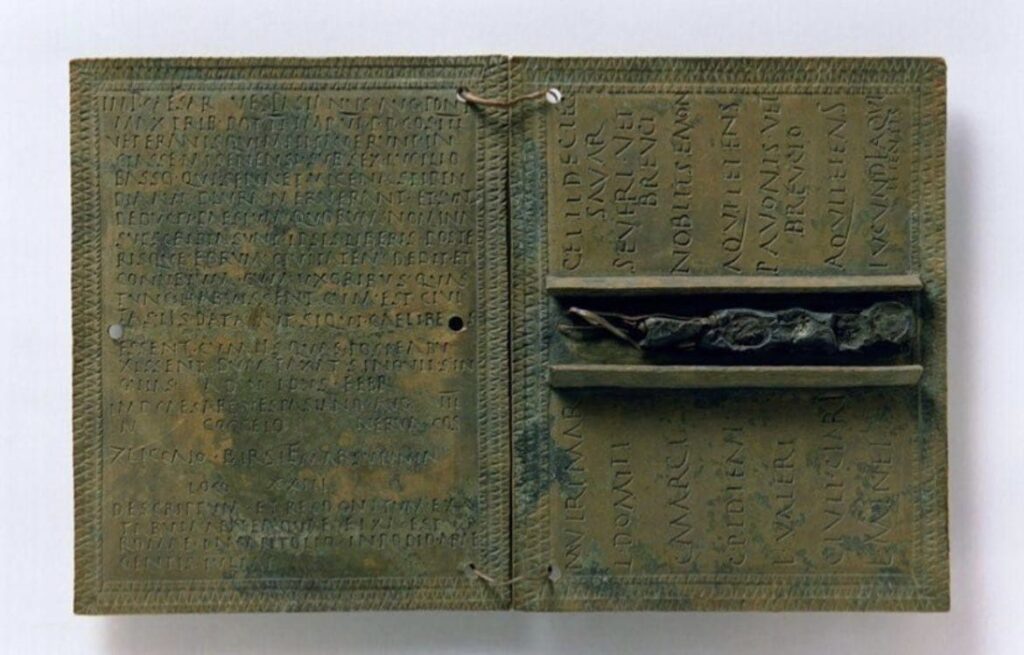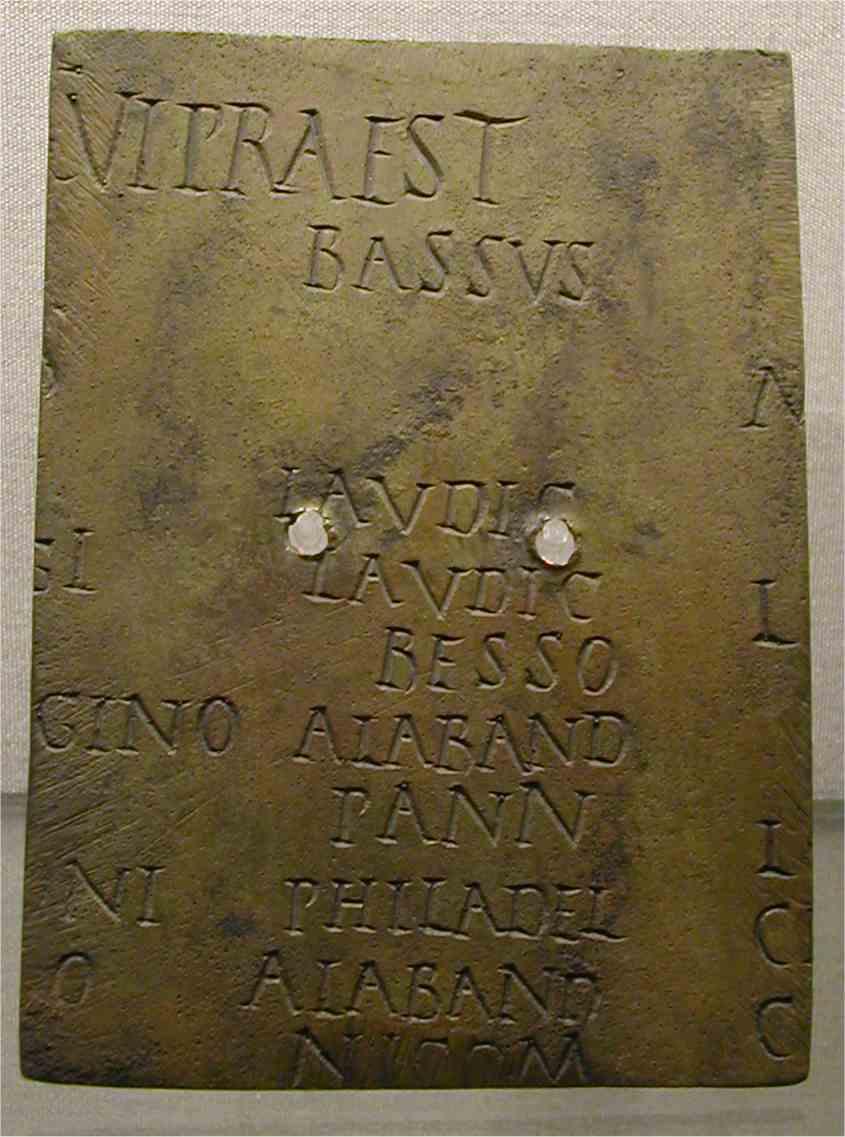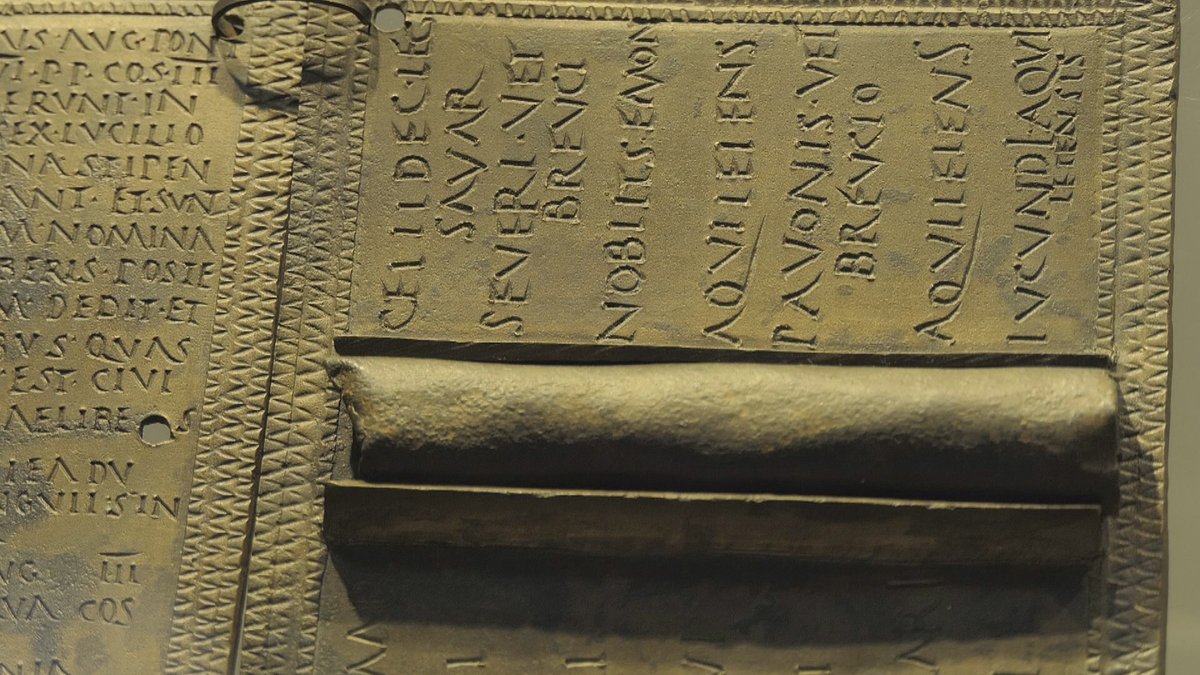Unveiling History: The 71AD Roman Military Diploma Rescued from a Croatian River
In the annals of archaeological discoveries, few are as captivating as the Roman military diploma dredged from a river in Croatia in 1997. Dating back to 71 AD, this well-preserved document offers a rare glimpse into the lives of Roman soldiers and the importance of their service to the empire. Issued to retiring soldiers upon the completion of their minimum required service, these diplomas were highly prized, and the one recovered from the Croatian river is no exception. What makes it truly remarkable is the presence of the original wax seals, bearing witness to the solemnity of the occasion and connecting us directly to the individuals who were part of this ancient ceremony.

Background:
The Roman military diploma was a significant document granted to soldiers who had fulfilled their duty to the Roman Empire. The document served as an official certificate of honorable discharge and granted various privileges to the retiring soldier, such as Roman citizenship for themselves and their families. The diploma was typically issued after 25 years of service, although variations existed depending on the specific terms of enlistment.
Discovery in Croatia:

In 1997, an archaeological expedition in Croatia unearthed a treasure trove of historical artifacts, among which was the exceptionally well-preserved Roman military diploma dating to 71 AD. The discovery took place during a dredging operation in the River Kupa, providing a rare opportunity for archaeologists to rescue a piece of history that had spent centuries submerged beneath the riverbed.
Remarkable Preservation:
The diploma’s remarkable state of preservation has allowed historians and archaeologists to study its contents with great precision. The text on the diploma details the soldier’s name, military unit, and the duration of their service, offering valuable insights into the structure and organization of the Roman military during the 1st century AD. The document also provides a glimpse into the administrative and bureaucratic aspects of the Roman military apparatus.
The Wax Seals:
One of the most extraordinary features of this Roman military diploma is the presence of intact wax seals. These seals, affixed by witnesses during the ceremonial granting of the diploma, add a tangible connection to the individuals who participated in the process. Each seal represents a distinct identity, a person who was present at the moment of the soldier’s honorable discharge. This tangible link to the past is a testament to the importance and authenticity of the document.
Historical Significance:
The discovery of the Roman military diploma in Croatia contributes significantly to our understanding of Roman military practices and the lives of individual soldiers. The document’s details shed light on the military structure, recruitment strategies, and the rewards bestowed upon those who served the empire faithfully. Moreover, the wax seals evoke a sense of immediacy, bridging the gap between modern-day enthusiasts and the ancient witnesses who participated in the ceremony.
Conclusion:

The 71 AD Roman military diploma recovered from the depths of the River Kupa stands as a testament to the enduring allure of ancient artifacts. Its discovery not only enriches our understanding of Roman military life but also provides a tangible connection to the past through the wax seals that have survived the ravages of time. As we marvel at this remarkable find, we are reminded of the intricate tapestry of history woven by the actions of individuals whose stories continue to captivate us across the centuries.
Related Post
A shocking documentary proves that mermaids do exist
SHOCKING Revelation: Thuya, Mother of Queen Tiye, Was the Grandmother of Akhenaten and Tutankhamun—What Ancient Egyptian Secrets Did She Leave Behind?
Breaking News: Astonishing Discoveries at Karahan Tepe Confirm an Extraterrestrial Civilization is Hiding on Earth, and NO ONE Knows!
Breaking News: Researchers FINALLY Discover U.S. Navy Flight 19 After 75 Years Lost in the Bermuda Triangle!
NASA’s Secret Investigation: Uncovering the Astonishing Mystery of the UFO Crash on the Mountain!
Explosive UFO Docs LEAKED: Startling Proof That Aliens Ruled Ancient Egypt!